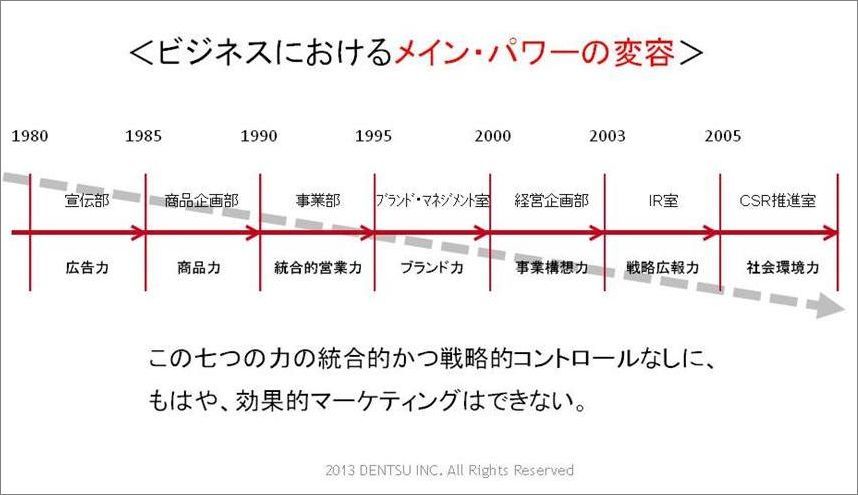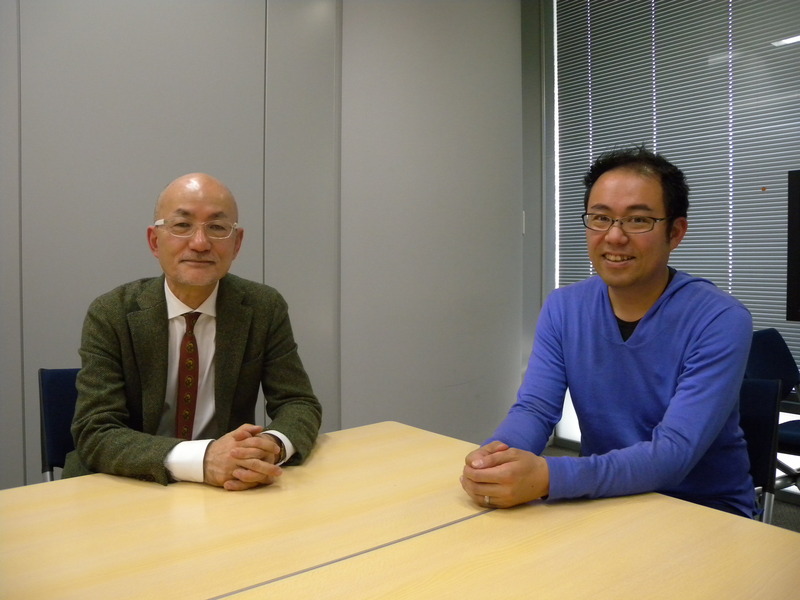The "DENTSU DESIGN TALK" series, compiling talk sessions between Dentsu Inc. creators and leading creators, intellectuals, and executives, has been published by BookWalker Co., Ltd .'s compact e-book label, [Kadokawa Minutes Book].
We will gradually introduce Chapter 1 of the session "What is Innovation from an Advertising Agency?" featuring Mr. Dai Tamura, Co-Representative of Re:public after working at Hakuhodo, and Mr. Kenji Shiroto, Special Advisor at Dentsu Inc. This session was the first installment released on January 30, 2014.
<Considering Innovation Through Cultural Anthropological Methods>
Shirato: First, let's take a moment to establish a mindset regarding basic definitions and terminology. While our theme, "Innovation from Advertising Agencies?", is quite charming, how do you fundamentally perceive terms like "advertising agency," "marketing," "ideas," and "innovation"?
For example, do you see an advertising agency as a media agency, a client agency, or an agency for consumers? The interpretation changes significantly depending on how you view the current state, considering its historical context.
I joined Dentsu Inc. in 1977 and have witnessed the evolution of the advertising industry for about 35 years. Looking back, the era up until the early 1980s was one of "advertising power," led by the advertising department. The late 1980s saw the rise of "product power," where the product planning department held influence.
From the 1990s onward, business divisions took the lead, ushering in the era of so-called "Integrated Marketing Communications (IMC)," which demanded integrated sales capabilities. Then, the late 1990s were called the era of "Brand Management."
The 2000s ushered in the era of "Corporate Planning." Since stock prices evaluate the future, not the past, companies were increasingly required to develop business concepts to boost their market capitalization.
By 2003, strategic communications like IR were hailed as critically important. Then in 2005, CSR became a major boom in Japan, demanding companies demonstrate their social and environmental capabilities.
Thus, while advertising remains a crucial domain, each of these powers demanded of corporate activities is equally vital, and the scope handled by advertising agencies has expanded significantly in recent years. The qualities demanded of individuals also change with the times. For example, in the 1980s when I was a newcomer working hard, many corporate advertising departments were directly under the president or executives. So, even a new agency employee like me would interact with the client company's president. However, today, it seems the focus is on how to become a professional within a vertically structured organization.

<Innovation has two aspects>
Tamura: I'll share how I think about "innovation."
At the University of Tokyo i.school, we hold workshops where university students and working professionals participate to generate innovation. In the workshops I facilitate, I often start by asking, "Think of something in your own life that you consider to have been an innovation."
Do any examples immediately come to mind?
I believe the concept of innovation itself has undergone significant change over the past 40 to 50 years. Let's look back around 1970. That was the year of the Osaka Expo. While the term "innovation" wasn't yet widespread then, if we had asked the same question back then, most answers would likely have been Astro Boy or the Apollo 11 moon landing the previous year.
Times have changed. The most interesting recent example came from a team of young students at a workshop.
It was "gel nails."
According to the students, gel nails revolutionized the previously tedious task of nail care. Once applied, they require no maintenance for a month. They said once you experience this convenience, you can't go back to the days of regular nail polish (laugh).
By the way, isn't it amazing that Apollo 11 and gel nails fall into the same category? The reason is likely that innovation has two aspects.
In the past, the idea was that science and technology themselves were innovation. In fact, in the 1955 Economic White Paper issued by the Ministry of International Trade and Industry, "innovation" was translated as "technological innovation." I suspect that back then, people shared the common understanding that science and technology would change the world and that science and technology themselves would shape the future.
So, does gel nail polish contain elements of science and technology? It probably didn't emerge from groundbreaking technological development. In other words, the key point of modern innovation isn't whether it involves technological breakthroughs, but whether it changes our lives.
Consider Apple's products, for example. If you asked someone, "Are the iPhone and iPod innovations?" few would likely answer "no." Yet, when the iPod first launched, it reportedly didn't incorporate any groundbreaking new technology in its components or underlying technologies. By 2001, when it launched, MP3 player technology was already mature, and the web technologies underpinning the iTunes Music Store were also fairly established by that time. Yet, by reconfiguring these technologies, it sparked an innovation universally recognized as groundbreaking. This happened because, much like gel nails, society shared the expectation that it would significantly transform people's lives. A pocket-sized portable player holding 1,000 songs with 10 hours of continuous playback. Plus, you could purchase individual songs on the spot whenever you wanted to listen. The iPod truly transformed our music experience dramatically.
Actually, predicting where technology will go next is surprisingly easy. After Apollo 11 landed on the moon, the next steps were obvious: Mars, or establishing a colony on the moon... the future was easy to envision. However, predicting things like gel nails, which aren't directly linked to technological innovation itself, is difficult.
So, how do we envision things that didn't exist before but will significantly change and enrich our lives? It's difficult precisely because there are no hints. It can't be depicted through deductive reasoning. That's why we study how we create innovation. The conditions for modern innovation don't necessarily require technological breakthroughs. However, it must bring about changes in our perceptions, behaviors, values, and habits. A single innovation gives birth to new ways of living, new lifestyles, and new habits. I believe this is what modern innovation is.

※Next update scheduled for February 2nd.







